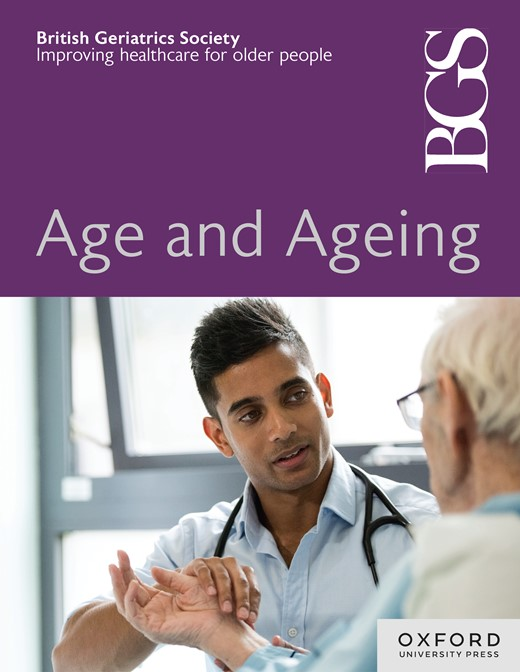"关爱弱势群体" 对一家医疗中心非创伤专科收治的 MTOA 的描述性分析
IF 6
2区 医学
Q1 GERIATRICS & GERONTOLOGY
引用次数: 0
摘要
背景 最近的 NOCA 报告强调,在重大创伤病例中,有很大一部分是老年人跌倒造成的。目前还缺乏针对老年创伤患者的治疗方案和服务。本研究旨在对主要创伤中心非创伤专科收治的 MTOA 的发生率和结果进行审计。方法 从2019年1月至2023年12月的交接文件中筛选出 "老年创伤 "病例(新创伤患者>65岁)数据,并使用Microsoft Excel进行分析。结果 2019 年至 2023 年期间,非创伤专科共收治了 992 名老年患者,平均年龄为 83 岁,女性占 73% (N=170)。平均住院时间为14天,骨盆受伤最为常见,占31%(N=307)。从站立高度跌落造成的伤害占 83%(823 人)。在面临进一步脆性骨折直接风险的患者中,只有28%(N=217)的患者接受了骨保护。大多数患者出院回家的比例为49%(样本数=456),而6%(样本数=55)的患者住进了养老院。住院总死亡率为 7%(66 人)。一年后的总死亡率为 17%(121 人)。住院期间死亡率最高的损伤是脑外伤,为 24%(21 人),一年后死亡率为 40%(35 人)。结论 本次审计显示,尽管该领域取得了进步,但老年患者的创伤护理仍存在差距。虽然髋部骨折数据库等举措改善了对特定创伤的护理,但对不需要手术的老年创伤患者却缺乏治疗途径。鉴于老年创伤患者的发病率和死亡率较高,建立老年创伤服务势在必行。这与文献支持的观点一致,即老年创伤患者需要专家的关注;他们不仅仅是老年人。本文章由计算机程序翻译,如有差异,请以英文原文为准。
“For the Care of the Underserved” A Descriptive Analysis of MTOA Admitted Under the Non-Trauma Specialties in a MTC
Background The recent NOCA report highlights a significant portion of major trauma cases resulting from falls among older adults, who often face limited access to trauma centres and age-related biases in treatment. Existing protocols and services for older trauma patients are lacking. This study aimed to audit the incidence and outcomes of MTOA admitted under the non-trauma specialties at a Major Trauma Centre. Methods Data from handover documents between January 2019 and December 2023 were screened for cases of “older trauma” (patients >65 with new trauma injuries) and analysed using Microsoft Excel. Results Between 2019 and 2023, 992 older patients were admitted under non-trauma specialties, with a mean age of 83 years and a majority being female 73% (N=170). The mean length of stay was 14 days, with pelvis injuries being most common 31% (N=307). Falls from standing height accounted for 83% (N=823) of injuries. Only 28% (N=217) of patients at immediate risk of further fragility fractures received bone protection. Most patients were discharged home 49% (N=456), while 6% (N=55) were institutionalized. The total mortality rate in hospital was 7% (N=66). The total mortality at one year was 17% (N=121). The injury with the highest mortality in hospital 24% (N=21) and at one year 40% (N=35) was traumatic brain injuries. Conclusion This audit reveals disparities in trauma care for older patients, despite advances in the field. While initiatives like the hip fracture database have improved care for specific injuries, pathways for older trauma patients not requiring surgery are lacking. Given the excess morbidity and mortality among this population, establishing a Geriatric Trauma Service is imperative. This is in line with literature supporting the idea that older trauma patients demand specialist attention; they are not just older adults.
求助全文
通过发布文献求助,成功后即可免费获取论文全文。
去求助
来源期刊

Age and ageing
医学-老年医学
CiteScore
9.20
自引率
6.00%
发文量
796
审稿时长
4-8 weeks
期刊介绍:
Age and Ageing is an international journal publishing refereed original articles and commissioned reviews on geriatric medicine and gerontology. Its range includes research on ageing and clinical, epidemiological, and psychological aspects of later life.
 求助内容:
求助内容: 应助结果提醒方式:
应助结果提醒方式:


